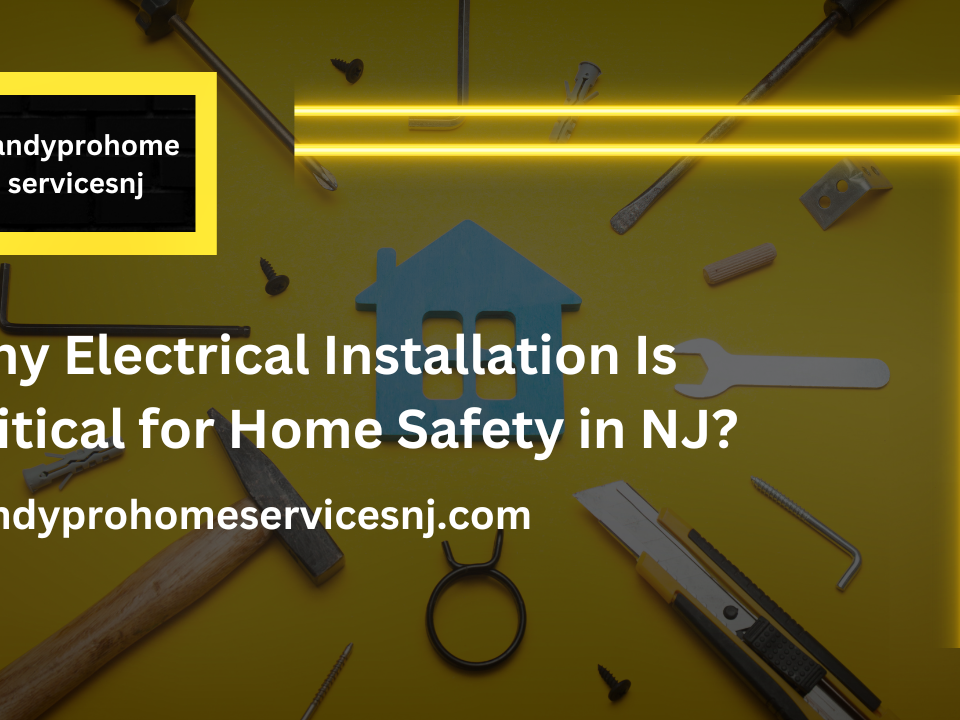What Are the Warning Signs of Faulty Electrical Wiring?

Why Electrical Installation Is Critical for Home Safety in NJ?
January 15, 2025
How to Handle a Water Leak in West Long Branch, NJ Homes?
April 4, 2025- Lights that flicker and breakers that trip often mean trouble
- Bad smells, odd sounds, or hot outlets are red flags
- Dark marks on outlets or switches show danger
- Old homes have higher risks of wiring problems
- Regular checks by pros keep your home safe
Understanding the basics of electrical services
Bad wiring isn’t just annoying – it’s dangerous. It powers everything we use daily, from phones to fridges. When wiring goes wrong, it can start fires or hurt people.
Here’s a scary fact: bad wiring caused 13% of all house fires from 2012 to 2016, says the National Fire Protection Association.
Basic Parts of Your Home’s Electrical System
Let’s start with the basics. Your home’s electrical system has these main parts:
- Power lines to your house: These bring electricity from the street
- Electric meter: Shows how much power you use
- Main power box: Contains all your circuit breakers
- House wiring: Carries power to different rooms
- Outlets and switches: Where you plug in and control power
Signs You Can See
1. Dark or Burned Outlets
Watch for:
- Brown or black marks
- Melted plastic edges
- Burn spots
These marks mean the outlet is getting too hot – a major fire risk.
2. Sparks
Small sparks when plugging in big items are okay. But if you see lots of sparks or big ones, that’s trouble.
3. Damaged Wires
Look in your basement, attic, and crawl spaces for:
- Split or peeling wire coating
- Bare copper wires
- Wires that look chewed
4. Bulging Wall Plates
If the covers around outlets stick out or have cracks, there might be heat building up inside.
Signs You Can Hear and Feel
1. Weird Sounds
Your wiring should be quiet. Be worried if you hear:
- Buzzing outlets
- Humming from the power box
- Crackling in walls
2. Bad Smells
If you smell burning near anything electrical, that’s serious. Turn off your main power and call an expert right away.
3. Hot or Shaky Outlets
Outlets shouldn’t:
- Feel warm
- Shake when you touch them
- Give you tiny shocks
How Your Power Acts
1. Flickering Lights
It’s normal when lights dim as big appliances start. But frequent flickering might mean:
- Loose wires
- Too much power on one circuit
- Problems in your main power box
2. Circuit Breakers Keep Tripping
If you’re always resetting breakers, you might have:
- Old wiring that can’t handle modern devices
- Bad circuit breakers
- Short circuits
3. Power Problems
Watch for:
- Random power cuts
- Dead outlets
- Appliances not working right
Hidden Problems
1. Aluminum Wiring
Found in homes built from 1965-1973. Look for:
- “AL” marks on wires
- Silver-colored wires
2. Old-Style Wiring
Pre-1950s homes might have outdated wiring with:
- Ceramic holders in attics
- Cloth-covered wires
3. Missing Safety Outlets
Kitchens, bathrooms, and outdoor spots need special GFCI outlets to prevent shocks.
What to Do If You Find Problems
- Take all signs seriously
- Turn off power if you’re worried
- Don’t try to fix it yourself
- Call a pro electrician
- Update old systems
Keeping Your Home Safe
- Check your outlets and switches often
- Get pro checks every 3-5 years
- Don’t overload circuits
- Add extra safety devices
- Know your local safety rules
Conclusion:
Spotting wiring problems or any electric issue early keeps your home safe. When in doubt, ask a pro. Don’t wait for something bad to happen – take action now.
Need help? Contact Handy Pro Home Services NJ for a safety check. Our licensed pros will make sure your home’s power is safe and working right.




